A Comprehensive Guide to Lipedema Stages and Types
Misunderstood and often misdiagnosed, lipedema is more than regular weight gain. It’s a chronic disorder that profoundly impacts the lives of those affected. Embarking on this journey, understanding the distinct lipedema stages is crucial in managing the condition effectively and reclaiming confidence in your body.
Those affected by lipedema typically experience disproportionate fat deposition, discomfort, or pain in the affected areas and a notable resistance to weight loss through dietary changes or exercise alone. This disorder is non-trivial; it’s real and significant, often affecting patients physically, emotionally, and socially.
Understanding that lipedema is not your fault – that it’s not a result of insufficient willpower or discipline – can be a stepping stone to acceptance, management, and self-empowerment. Our bodies, as beautiful and complex as they are, act and react uniquely. Genetic predisposition, hormonal interplay, and even environmental triggers contribute to the onset and progression of lipedema, reminding us that we are not to blame.
Standing at the crossroads of this new understanding, you’re not alone. Dr. Bernard Salameh has integrated expertise, compassion, and advanced cosmetic procedures into an individualized approach to lipedema management. Guided by the vision to enhance the lives of those navigating lipedema, we’re here to provide you with detailed knowledge about each step of the process, right from diagnosis to post-operative care.
Feeling empowered comes from possessing knowledgeable insights, understanding what lies ahead, and knowing that you have a dedicated team beside you every step of this journey. Let’s move forward together, breaking down misconceptions, building a better understanding, and stepping into a future of wellness and confidence.
This comprehensive guide aims to help you navigate through the four stages of lipedema, arming you with crucial knowledge and reassurance every step of the way.
The Four Lipedema Stages: Things You Should Know
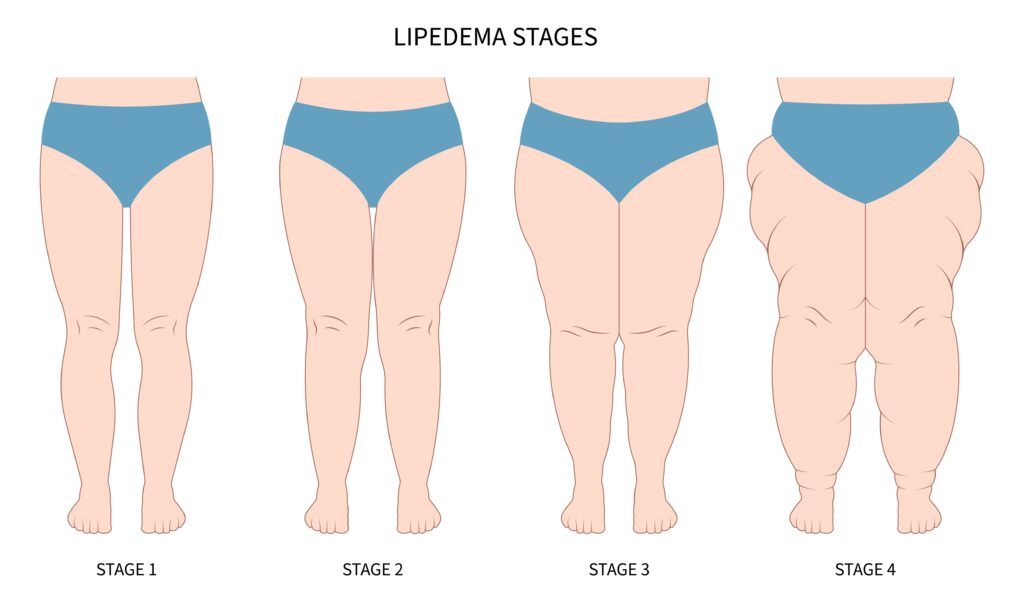
Stage 1 Lipedema
This initial stage can be sneaky. Stage 1 lipedema often masquerades as regular weight gain, with excess fat cells accumulating under the skin, typically in the legs, arms, or both. The skin surface remains smooth, but the tissue underneath assumes a spongier, softer texture akin to a pillow.
At this stage, women often maintain a symmetrical body shape, adding to the misperception that the increased size is attributed to average weight gain. However, an important distinction lies in the pain or tenderness often associated with the increased adipose tissue – a critical red flag for lipedema.
If you notice an unusual increase in size in any specific body area accompanied by discomfort, make sure to seek professional consultation. Early detection paves the way for preventative measures and action plans that might slow progression to subsequent stages.
Stage 2 Lipedema
Entering Stage 2, the distinction between ordinary weight gain and lipedema becomes more apparent. The skin’s texture shifts, adopting a bumpier, uneven appearance comparable to an orange peel. The accumulating fat becomes more dense, and lipedematic nodules – clusters of hardened fat cells, start to form.
Movement may become uncomfortable as the uneven fat distributions create imbalances in the body, affecting everyday activities and self-confidence.
Remember – you are not alone in this journey. Treatment options exist that can alleviate your symptoms and improve your quality of life.
Stage 3 Lipedema
In Stage 3 lipedema, excessive fatty tissues accumulate more aggressively, leading to large folds or lobules of fat, mainly hanging from the inner thighs and under the knees. Your movement may be significantly impaired, leading to an increased risk of joint problems, venous diseases, and secondary health complications.
Your emotional well-being may also be in jeopardy dealing with the physical changes; this is where compassionate care, such as that at Salameh Plastic Surgery Center, plays a crucial role. We believe in not just treating the physical symptoms but addressing the emotional challenges that come hand in hand with Stage 3 lipedema.
Stage 4 Lipedema (Also Known as Lipo-Lymphedema)
Lipo-Lymphedema, the onset of secondary lymphedema and lipedema, characterizes Stage 4. The disease progresses to where the significantly enlarged fatty tissues impair the lymphatic system, which is vital to maintaining fluid balance.
Severe swelling can occur in Stage 4, as the overloaded lymphatic system struggles to manage fluid levels, further impeding movement. At this stage, your quality of life can be significantly impacted. However, solutions exist even for this advanced stage of lipedema. Just continue reading to find out.
Understanding Lipedema Types: A Detailed Overview
Medical professionals categorize lipedema into five different types. Each reflects the specific areas of the body where excess fat can accumulate due to lipedema.
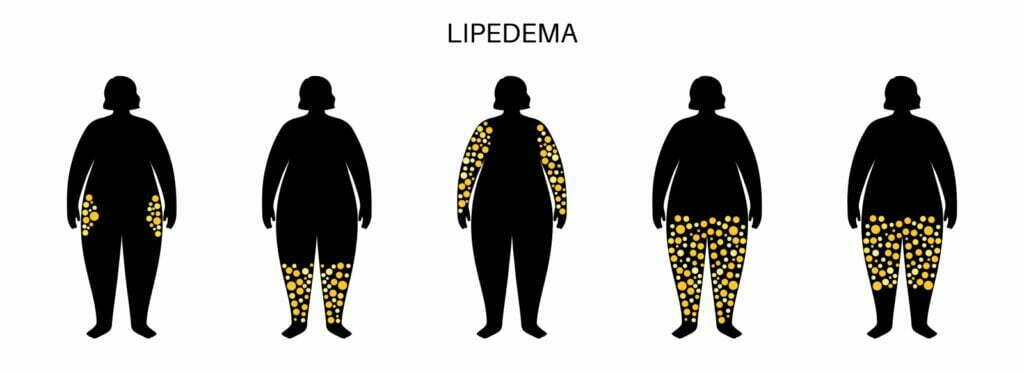
Type I Lipedema:
Primarily, the fat is noticeable between the navel and the hips. It often extends to the pelvis and buttocks. You may find that your waistline is disproportionally wider than usual.
Type II Lipedema:
The excess fat forms around the pelvis and extends down to the knees. In this case, the aesthetic change in your thighs and lower body may be more pronounced.
Type III Lipedema:
The fat begins at the pelics and continues down to the ankles. Those with this type may notice a prominent cuff of excess fat at the ankle, often called a “bracelet effect.”
Type IV Lipedema:
In this category, fat spreads from the shoulders and reaches down to the wrists. Your arms may appear more substantial and out of proportion with the rest of your body.
Type V Lipedema:
This type is considered very rare, where fat is predominantly on the calves.
It’s worth mentioning that some individuals experience a combination of these types. The most commonly seen combinations are Type II and IV or Type III and IV. Your doctor or healthcare practitioner will help identify your lipedema type and suggest the most suitable management plan.
Your Journey, Our Support
Lipedema can be an intensely personal and emotional journey, with highs and lows, challenges and victories. The path may be rough, but please remember – you are not alone; our goal at Salameh Plastic Surgery Center is to provide comprehensive care, practical solutions, and unwavering support throughout your journey.
See Dr. Salameh’s recent Lippylipo treatment Before and After photos:
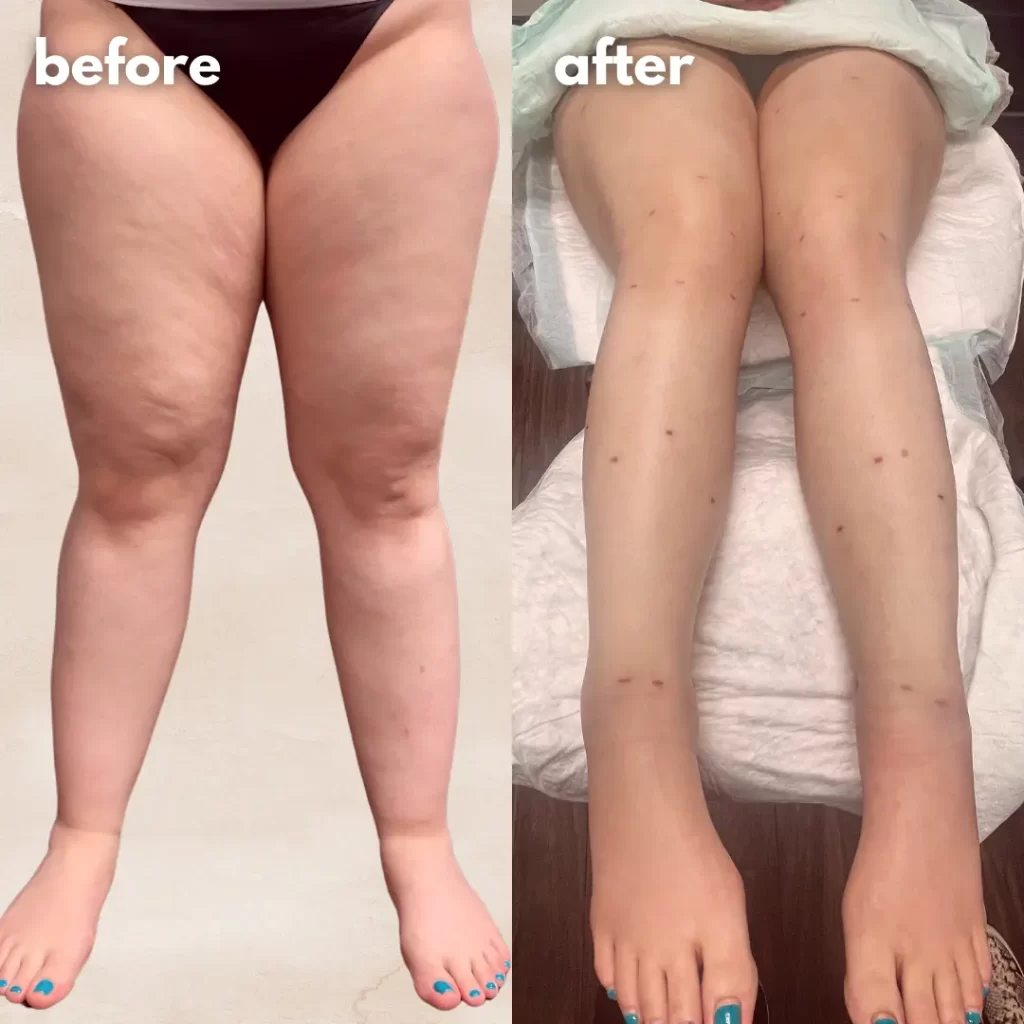
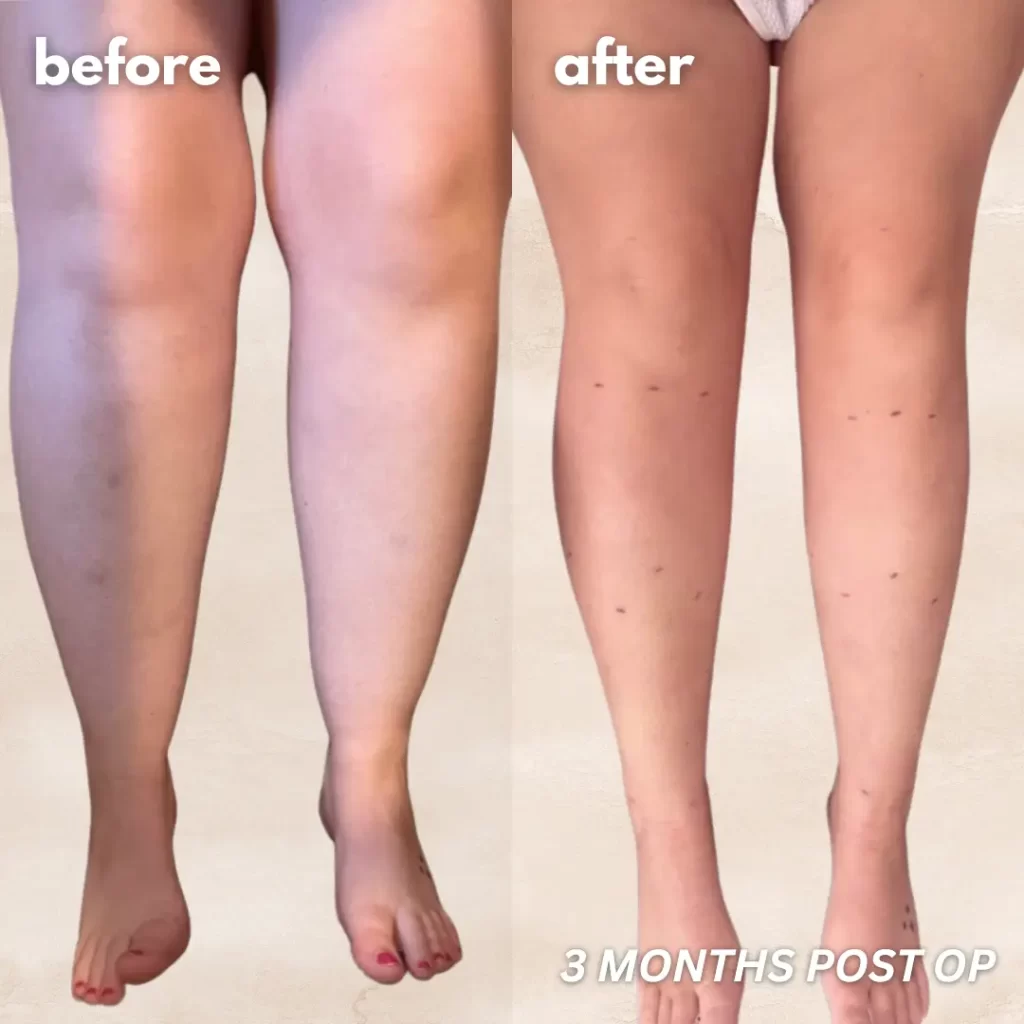
See more of Dr. Salameh’s work here: Salameh Plastic Surgery Center Before and After
Dr. Salameh, with his expertise, has ushered countless women through successful lipedema treatment protocols, bolstering their confidence and quality of life. If you’re seeking a compassionate, expert partner to navigate the challenges of lipedema, reach out to us.
Your journey with lipedema might be challenging, but understanding its stages aids in early detection, appropriate responses, and timely care – keys to mitigating its impacts on your life.
See some of our previous patients’ stories:
Pain to Power: How Leah Found Relief with Our Lipedema Treatment
Reclaiming Freedom from Lipedema: Ally’s Remarkable Journey
LippyLipo – The Expert Lipedema Cure Pioneered by the World-renowned Dr. Salameh
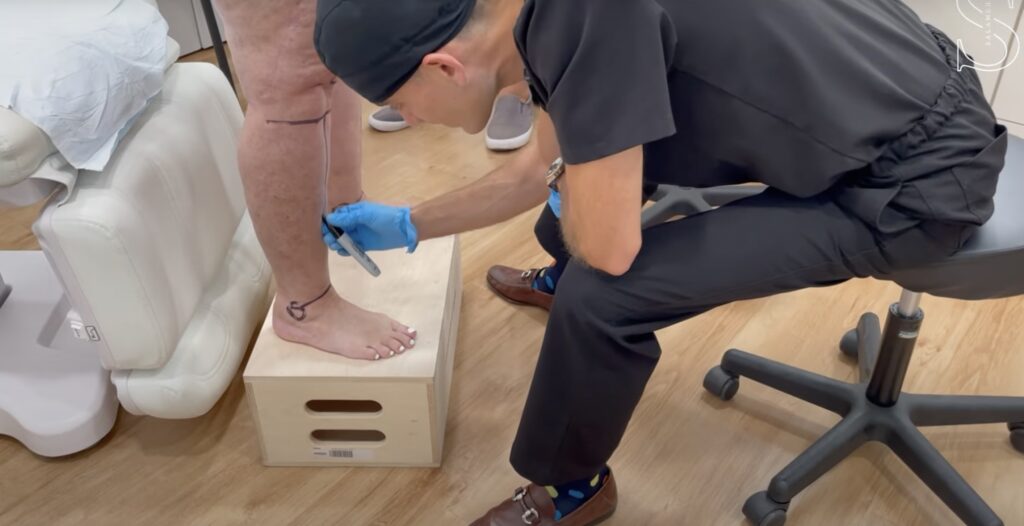
LippyLipo is an “awake” liposuction technique pioneered by the world-renowned Dr. Salameh. It is specially designed to cater to lipedema patients. Unlike traditional liposuction methods that typically require general anesthesia, LippyLipo allows you to remain awake during the procedure.
This state-of-the-art technique leverages the power of local anesthesia to numb the targeted area, ensuring you feel no discomfort throughout. Unique in its approach, the LippyLipo technique involves the use of microcannulas (tiny tubes), which allow Dr. Salameh to delicately and precisely remove the unhealthy fat cells associated with lipedema, circumventing the risk of tissue damage often seen with larger cannulas used in traditional liposuction.
The LippyLipo Advantage
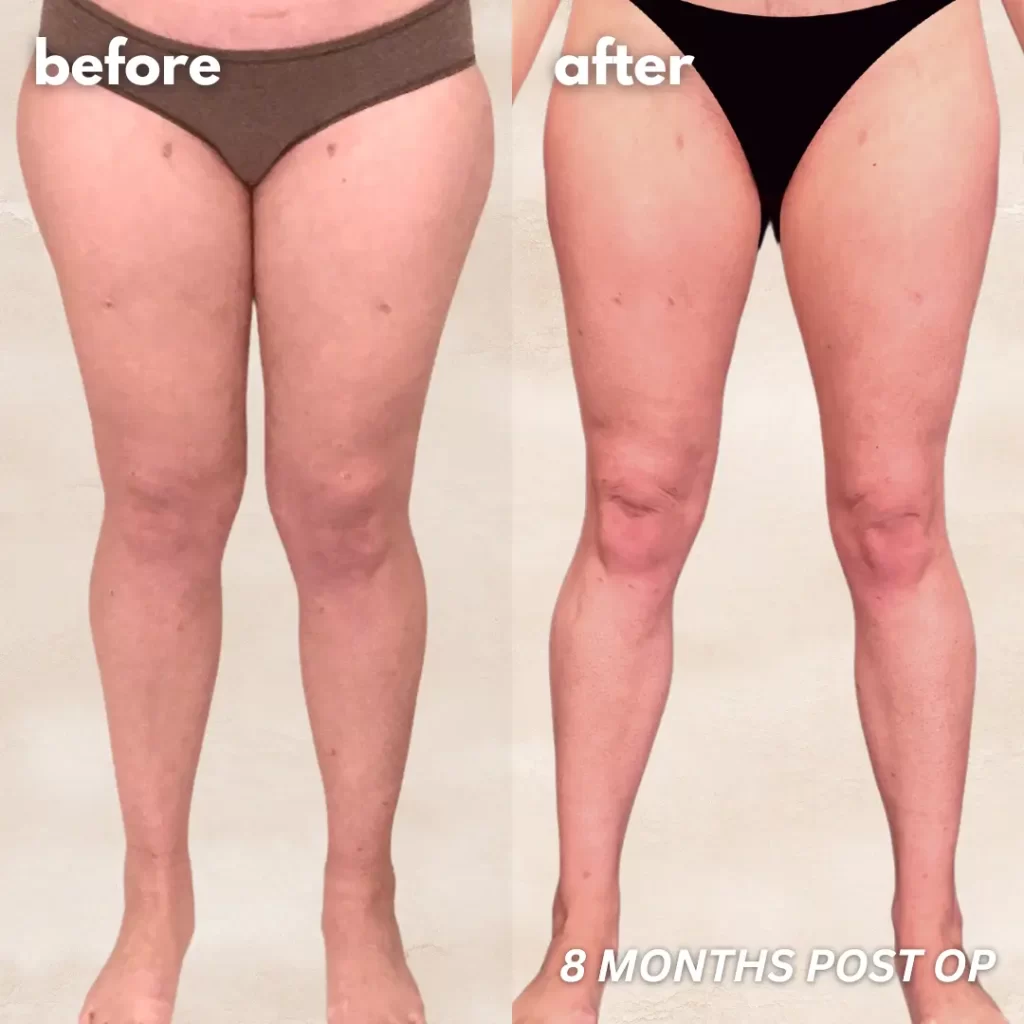
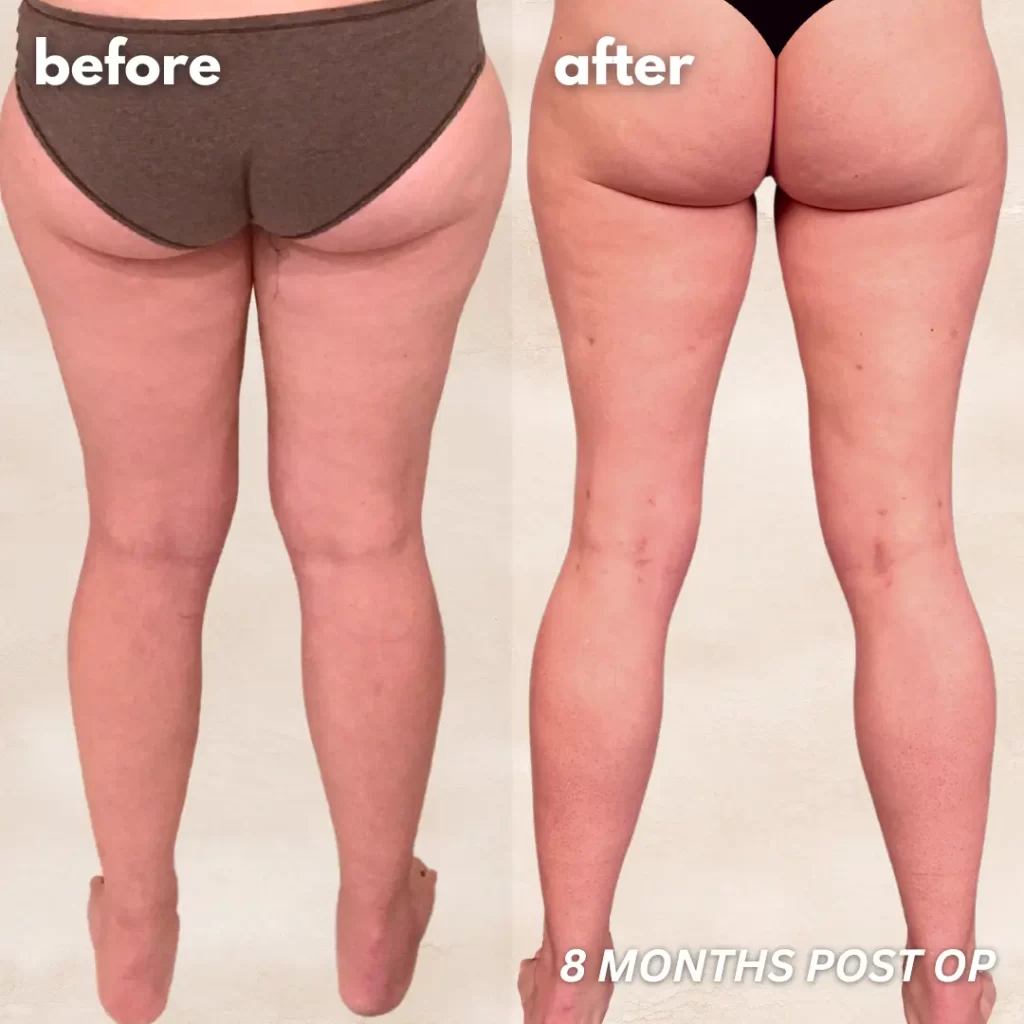
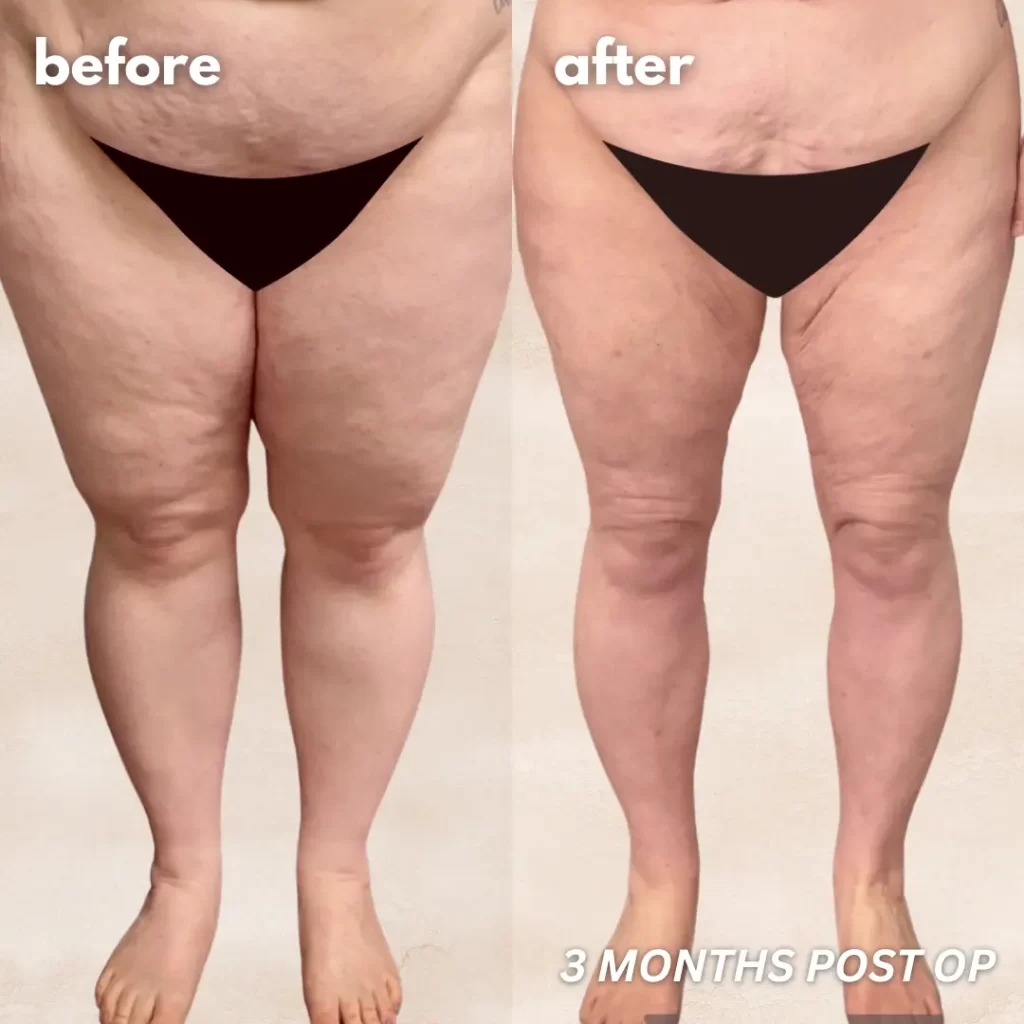
Understanding how LippyLipo lipedema treatment rises above the traditional method can help clarify and comfort your decision-making process. Here’s a closer look at its key benefits:
Greater Safety and Reduced Risks
Since LippyLipo uses local anesthesia, it eliminates the risks associated with general anesthesia, such as postoperative nausea, vomiting, and potential anesthetic complications. Safer and more controlled, this process offers an optimized lipedema management pathway focused on your overall well-being and safety.
Enhanced Comfort
With LippyLipo, using microcannulas and local anesthesia ensures a comfortable experience during and after the procedure. Striking a unique balance between effectiveness and gentleness, LippyLipo prioritizes your comfort every step of the way.
Improved Precision
The awake nature of LippyLipo allows for real-time sculpting, promoting enhanced precision and natural-looking outcomes.
Reduced Recovery Time
Compared to traditional liposuction methods, patients typically experience shorter post-procedure recovery times with LippyLipo. Minimizing tissue trauma ensures that you are back on your feet faster, resuming your normal activities as swiftly as possible.
Long-Term Results
The effectiveness of LippyLipo in treating lipedema has been consistent, often bringing about significant improvement in patients’ quality of life.
Considering a cosmetic procedure, especially something as transformative as liposuction, is a significant decision. But you’re not alone. At Salameh Plastic Surgery Center, our goal is to provide you with complete, transparent, and compassionate guidance on this journey.
Our testimonials offer voices of real people who’ve undergone LippyLipo, providing an extra layer of reassurance and trust in Dr. Salameh’s expertise. We’re here to discuss potential concerns about cost, scarring, recovery time, and, most importantly, to highlight the long-term benefits of this pioneering procedure.
With LippyLipo, you’re choosing a kinder, safer, and more effective pathway to managing lipedema – a journey we are privileged to share with you. Together, let’s navigate this path to bring about changes that build confidence, bring relief, and restore the joy of living life without limitations.
Takeaway
Understanding the four distinct stages of lipedema, armed with insights into its types, holds a crucial role in your journey. It enables early detection, proactive management, and holistic care – pivotal elements to mitigating the condition’s impact on your life.
Choosing to pursue a cosmetic procedure to combat lipedema is indeed a significant decision. Yet, bear in mind that in this journey, you’re not alone. At Salameh Plastic Surgery Center, our commitment lies in providing detailed, compassionate, and clear-cut guidance throughout this process. With a firm grounding in Dr. Salameh’s expertise, you’re equipped with a dedicated team set out to provide steadfast support.
Our distinctive “awake” liposuction technique, LippyLipo, paves the way in lipedema treatment. Its advantages – safety, comfort, precision, reduced recovery time, and consistent long-term results – signify a brighter, more hopeful horizon for those affected by lipedema.
Take heart in the experiences of countless women who’ve walked this path before with LippyLipo, bolstering their confidence and uplifting their quality of life.

